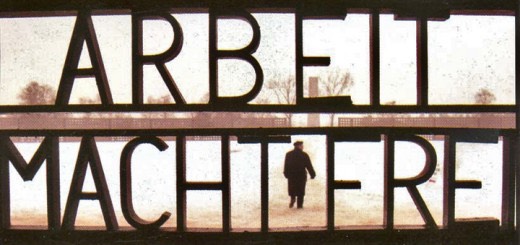The man with the pink triangle, a testimony of the homocaust
Review of Rachael Binning published on the website of the University of California, Santa Barbara (United States), freely translated by Silvia Lanzi
The man with the pink triangle (The Men With The Pink Triangle) is a compelling personal story of the macabre persecution that took place against homosexuals during the Second World War. This book underlines the fact that, although homosexuals were treated horriblely, like the Jews if not worse, there is a superficial knowledge of the abuses that homosexuals had to bear. This, in part, is due to the fact that, even before the war, homosexuality in Germany was considered a crime and even today it is considered a controversial topic, thus preventing the survivors from sharing their stories.
Heinz Heger makes a detailed and chilling story of his experience in prison and the concentration camp of Sachsenhausen in Germany. Heger was born in Vienna in January 1915 and was a university student when he was arrested. Unlike many homosexuals of that period, he had revealed his homosexuality to the mother and had however been accepted in the family.
Due to paragraph 175 of the Heger penal code he was arrested without notice in March 1939 and put in a prison where he remained six months with other criminals. Although he had been promised to be freed, after six months he was transported to the Sachsenhausen concentration camp. Later he was transferred to the Flossenbürg camp, where he remained until the liberation by American forces in April 1945.
Most of Heger's autobiography is dedicated to the description of the terrible conditions in which the prisoners were forced to survive and the methods that Heger himself used to do it. Although many men, including Heger, were interned in the concentration camps due to their homosexuality, this did not prevent others, not condemned as homosexuals, to participate in homosexual acts. In fact, Heger was able to survive becoming a "Dolly-Boy" for many Kapo. In exchange for sexual favors Heger received additional rations of food and protection from brutal treatments and punishments. Since Heger maintained a good reputation in the field, towards the end of imprisonment it became the first homosexual kapò and remained in that position until the field was freed.
As well as in other fields, while the Nazis arrived dangerously close to the defeat, a "march of death" began, in which all the prisoners marched on foot for many miles in the direction of Dachau. This march was particularly horrible and many men died of hardship. One morning, during the march, the prisoners got up to find that the men of the SS had abandoned them.
Heger and many other men took the opportunity to escape and finally found a farm where they were kindly welcomed and received food. In the end Heger came back healthy and save at home, sadly alone. His mother welcomed him, because his father had committed suicide because of the abuses received because his son was homosexual. Although Heger was extremely happy to be at home and was accepted by his family, his community has not received it with open arms. Homosexuality was still looked at below and was considered illegal. For this reason, he did not receive any compensation for the period in the concentration camp, unlike other survivors. Heger ends his story with the important message that many victims should not be forgotten.
This book was my first introduction to the theme of homosexuality during the Holocaust. Although the introduction of David Fernbach shows many important facts on the treatment of homosexuals and the laws against them during the Holocaust, most of the book is not dedicated to the facts, but rather to the history of Heger and the abuses he suffered. It is clear to me why this book has reached such a high status: because it reveals a part of the Holocaust that has been discussed and subject to research for many years.
As Heger implies at the end of his memories, many homosexual victims were hesitant to tell their stories because after the war homosexuality was still illegal and not accepted in many societies. Because of this, little is known about the treatment of homosexuals during this period compared to what is known about Jewish victims. A point underlined throughout the history of Heger is the terrifying treatment that homosexuals endured. At that time homosexuality was considered by many to be a disease.
For this reason, homosexuals were isolated in their bunks, where they were forced to sleep all the time with the lights on and with the hands that never had to be under the covers. Once, during Heger's imprisonment, Himmler also cost homosexuals to sleep with gypsy and Jewish women to try to "treat" their "disease". Published for the first time in 1972, Heger's personal story was one of the first books to tell the horrible abuses suffered by homosexuals during the Nazi regime.
The United States Holocaust Memorial Museum
The United States Holocaust Memorial Museum, located in Washington DC, is a first institutes that deal with the Holocaust and is known all over the world for its vast research and for its exhibitions on the Holocaust. The website of this museum is full of information on many aspects of the Holocaust, including homosexuality. By typing the keyword "Homosexuality" in the search box on the main page it is easy to find an infinite number of sites and documents on this topic. The site does not only include facts on the treatment of homosexuals at that time but also many personal stories and events that are held at the museum, related to homosexuality.
After reading several websites I found that this contains most of the homosexual information during the Holocaust.
The site is clearly organized, it has abundance of information and is quite interactive. While looking at many information pages you can click on the photographs of people persecuted during the Holocaust and read their stories. This site is an excellent supplement toThe man with the pink triangleBecause it provides the facts behind Heger's story and also information on many other homosexuals subject to persecution, such as Heger.
Original text: The Men With The Pink Triangle (London, 1986)






